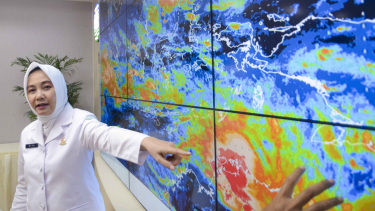- VIVA/Syaefullah
VIVA – The Meteorology, Climatology and Geophysics Agency or BMKG estimates that the increase in air temperature in all major cities in Indonesia by the end of the 21st century can reach 3 degrees Celsius or more. It can happen if Indonesia did not succeed in mitigating climate change.
This was conveyed by the Head of BMKG Dwikorita Karnawati at the online BMKG 2022 National Coordination Meeting in Jakarta on Monday, August 8, 2022.
Dwikorita also says that Indonesia has a big challenge if climate change has reached a critical condition.
The impact of climate change is increasingly real and serious, the rate of temperature increase in the last 42 years has reached an average of 0.02 degrees Celsius to 0.443 degrees Celsius each decade in Indonesia.
"The highest reached 0.4 degrees Celsius per decade occurred in East Kalimantan," Dwikorita remarked.
Meanwhile, the increase in global surface air temperature has reached 1.1 degrees Celsius compared to pre-industrial times in 1850 to 1900.
Kepala BMKG Dwikorita Karnawati
- VIVA.co.id/M Ali Wafa
She also revealed that the BMKG also noted the impact of climate change resulting in warmer sea surface temperatures in Indonesian waters to a temperature of 29 degrees Celsius during moderate La Nina and Tropical Storm Seroja in East Nusa Tenggara.
Not only that, the glacier in Jaya Wijaya Mount based on the results of BMKG research is currently only about 2 square kilometers or one percent of its initial area of ??about 200 square kilometers.
"BMKG also predicts that the glacier will become extinct, melting around 2025-2026," Dwikorita said.
According to Dwikorita, the monitored global average sea level rise also reached 4.4 mm each year in the 2010-2015 period, higher than the period before 1900 which was 1.2 mm each year.
The climate return period of El Nino and La Nina is also getting shorter from 5-7 years in the 1950-1980 period, to only two until three years after 1980 to the present.
"All of these have an impact on increasing the frequency and duration of extreme durations. That is the reason why hydrological disasters such as floods, landslides, flash floods, tropical storms, rainfall and droughts are also increasing, their intensity, duration, and occurrence increase," The Head of BMG explained.
























